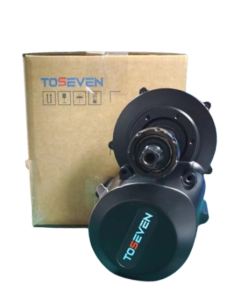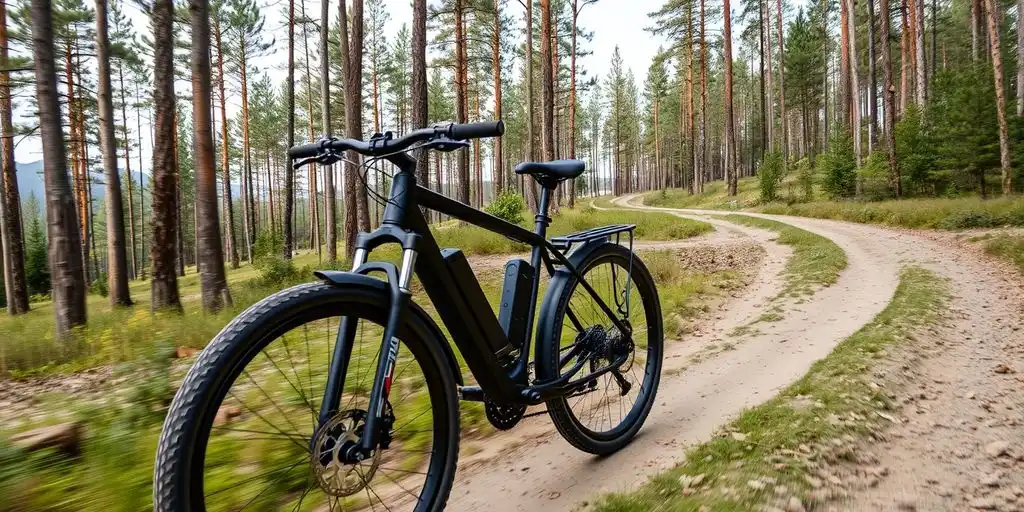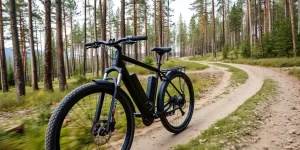Are you tired of pedaling up steep hills or struggling to keep up on long rides? An ebike conversion kit might be the perfect solution for you. These kits let you turn your regular bike into an electric one, offering a more budget-friendly and customizable option than buying a new e-bike. This guide will walk you through everything you need to know about choosing the right e-bike conversion kit, how to install it, and the benefits it can bring to your cycling experience.
Key Takeaways
- ebike conversion kit allow you to upgrade your existing bike to an electric bike, saving money compared to buying a new e-bike.
- There are various types of conversion kits available, including front-wheel, rear-wheel, and mid-drive kits, each with its own pros and cons.
- Key components of a conversion kit include the motor, battery, controller, and throttle, which work together to provide electric assistance while you pedal.
- Choosing the right kit involves assessing your bike’s compatibility, understanding your riding needs, and considering your budget.
- Proper installation and regular maintenance are crucial for ensuring the safety and longevity of your e-bike conversion kit.
Understanding ebike conversion kit
E-bike conversion kits are a game-changer for cycling enthusiasts. They allow you to transform your regular bicycle into an electric bike, providing a cost-effective and environmentally friendly way to enhance your riding experience. Let’s dive into the details of what these kits are, the types available, their key components, and the pros and cons of using them.
What is an ebike conversion kit?
An e-bike conversion kit is a set of components designed to convert a standard bicycle into an electric bike. These kits typically include a motor, battery, controller, and throttle. With an e-bike conversion kit, you can enjoy the benefits of an electric bike without buying a new one.
Types of E-Bike Conversion Kits
There are three main types of ebike conversion kit:
- Front Wheel Conversion Kits: These kits replace the front wheel with a motorized one. They are easy to install and affordable.
- Rear Wheel Conversion Kits: These kits replace the rear wheel. They offer better balance and traction but are slightly more complex to install.
- Mid-Drive Conversion Kits: These kits replace the bike’s bottom bracket and connect directly to the chain. They provide better power and efficiency but are more expensive and harder to install.
Key Components of a Conversion Kit
An e-bike conversion kit typically includes the following components:
- Motor: Provides the electric power to assist your pedaling.
- Battery: Stores the electrical energy needed to power the motor.
- Controller: Manages the power flow from the battery to the motor.
- Throttle: Allows you to control the motor’s power output.
- Speed Sensor: Monitors the bike’s speed.
- Brake Sensor: Ensures safety by cutting off the motor when braking.
- Cranks and Chainrings: Essential for mid-drive kits.
- E-Bus Wires: Connect various components.
- Installation Tools: Necessary for assembling the kit.
Pros and Cons of Conversion Kits
Pros:
- Cost-Effective: Converting your existing bike is cheaper than buying a new e-bike.
- Environmentally Friendly: Reduces the need for new bikes, lowering your carbon footprint.
- Customizable: Allows you to choose components that fit your needs.
Cons:
- Complex Installation: Some kits, especially mid-drive, can be challenging to install.
- Compatibility Issues: Not all kits fit all bikes.
- Maintenance: Requires regular upkeep to ensure optimal performance.
E-bike conversion kits are a popular way to turn your bike into an e-bike. Here are the different options.
Understanding these aspects will help you make an informed decision when choosing an e-bike conversion kit. Get ready to transform your ride and enjoy the benefits of electric biking!
How to Choose the Right ebike conversion kit
Choosing the right ebike conversion kit can be a game-changer for your cycling experience. Here are some key factors to consider:
Assessing Your Bike's Compatibility
Not every bike is suitable for an ebike conversion kit. Compatibility is crucial. Most standard bikes can be converted, but mountain bikes, hybrids, and cruiser bikes are especially good choices due to their sturdy frames. Road bikes with ultra-light frames are generally only suitable for smooth roads. Additionally, full-suspension mountain bikes are often difficult to convert because of their complex rear suspension systems.
- Wheel size: Conversion kits typically accommodate common sizes like 26-inch, 27.5-inch, 28-inch, and 700c wheels. Kits for less common sizes may be harder to find.
- Frame material: Steel and aluminum frames are preferred for their durability and strength. Carbon fiber frames are usually not recommended because they may not withstand the stress from a motor.
- Brakes: Disc brakes, whether hydraulic or mechanical, are recommended for the additional stopping power required for an e-bike. If your bike has rim brakes, they may suffice, but consider upgrading the brake pads for better performance.
Determining Your Riding Needs
Think about how you plan to use your e-bike. If you’ll be tackling steep hills or off-road trails, you may need a more powerful motor and a higher capacity battery. On the other hand, if you’ll primarily be using your e-bike for short commutes, a less powerful kit with a smaller battery may suffice.
- Power and range: Determine the level of power and range you require from your e-bike. Higher capacity batteries will provide a longer range but may also be heavier.
- Control system: Some kits offer simple throttle control, while others provide pedal-assist modes that automatically adjust the power based on your pedaling input.
Reading Reviews and Recommendations
Before making a purchase, it’s important to research and read reviews to ensure that the brand and model you choose meet your specific requirements and expectations. Consider factors such as power, battery capacity, reliability, and customer support when making your decision.
By considering these factors, you can narrow down your options and choose an e-bike conversion kit that best suits your needs and preferences.
For more information on the best e-bike conversion kits, check out To7Motor latest offerings, including the DM01 & DM02 kits with t24 display, throttle, speed sensor, and more.
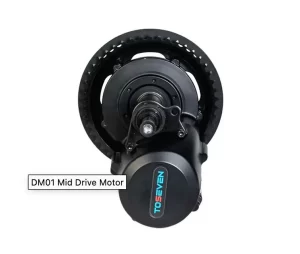
Step-by-Step Guide to Installing an ebike conversion kit
Transforming your bike into an e-bike can be a fun and rewarding project. Follow these steps to ensure a smooth installation process.
Required Tools and Materials
Before you start, gather all the necessary tools and materials. Here’s a list to help you get prepared:
- Metric Allen wrenches
- Screwdrivers (Philips and flathead)
- Pliers
- Torque wrench
- Chain tool
- Crank removal tool
- Specialized tools (if required by your kit)
- Conversion Kit Items: DM01 & DM02, t24 display, Throttle, Speed Sensor, Shift Sensor, Brake Lever, Cranks, 46T chainring, 42T Chainring, 1T3 e-bus wires, 1T4 e-bus Wires, Clamp, Installation Tool, Locking Rings, Cable Wrap, Brake Sensor
Preparing Your Bike for Installation
- Clean Your Bike: Start by giving your bike a thorough cleaning. This will make the installation process easier and help you spot any potential issues.
- Inspect for Damage: Check for any wear and tear that could affect the installation. Fix any issues before proceeding.
Installing the Motor and Battery
- Remove the Rear Wheel: Carefully take off your rear wheel, as it will be replaced by the motor.
- Mount the Motor: Place the motor in the dropouts where the old wheel was. Ensure it is securely fastened and aligned correctly.
- Attach the Battery: Find a suitable spot on the frame or rear rack to mount the battery. Use the provided brackets or straps to secure it firmly.
Testing and Troubleshooting
- Connect All Components: Follow the wiring diagram provided with your kit to connect the motor, battery, throttle, and display. Make sure all connections are secure.
- Test the System: Turn on the battery and test the system to ensure everything is working correctly. Check the throttle, display, and motor for proper functionality.
- Troubleshoot Issues: If you encounter any problems, refer to the manufacturer’s instructions or seek help from online forums and videos.
Tip: Always double-check your connections and follow each step meticulously to ensure a successful installation.
By following these steps, you can transform your bike into an e-bike and enjoy the benefits of electric-assisted riding. Remember, safety first!
Top E-Bike Conversion Kits on the Market
Choosing the right ebike conversion kit can be overwhelming with so many options available. Here, we break down some of the top kits to help you make an informed decision.
Benefits of Using an ebike conversion kit
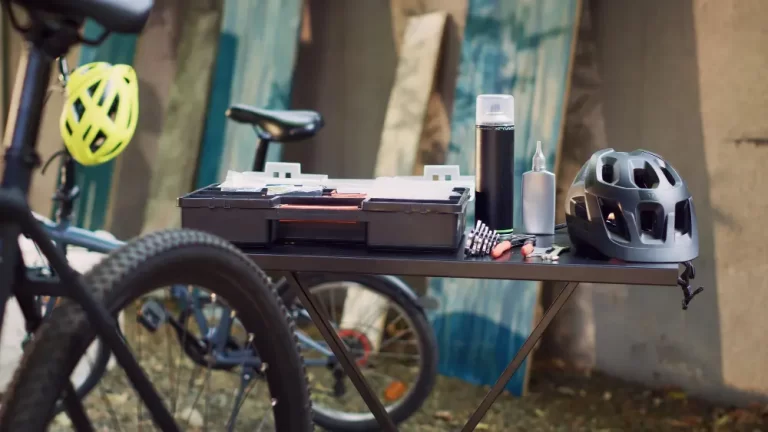
Cost-Effectiveness
One of the main advantages of e-bike conversion kits is that they are much more cost-effective than buying a new e-bike. You can convert your existing bike into an e-bike for a fraction of the cost of a new e-bike. This is a great way to save money while still enjoying the benefits of an electric bike.
Environmental Impact
Electric bikes are much more environmentally friendly than cars or traditional bikes. By converting your bike into an e-bike, you can reduce your carbon footprint and help protect the environment.
Easy to install
Ebike conversion kit are easy to install and can be done without any specialized knowledge or expertise. With just a few basic tools, you can convert your bike into an e-bike in a matter of hours.
Customization Options
Ebike conversion kit allow you to customize your ride according to your specific needs and preferences. You have the freedom to choose the type of motor, battery capacity, and control system that best suits your riding style. Whether you’re looking for a high-powered motor for off-road adventures or a compact and lightweight system for commuting, the flexibility of conversion kits allows you to tailor your e-bike to your liking.
Common Mistakes to Avoid When Installing an ebike conversion kit
Installing an e-bike conversion kit can be a rewarding DIY project, but it’s important to avoid common mistakes to ensure a smooth and successful installation. Here are some key pitfalls to watch out for:
Ignoring Compatibility Issues
One of the most frequent mistakes is ignoring compatibility issues between your bike and the conversion kit. Always check if the kit is suitable for your bike’s frame, wheel size, and brake type. Mismatched components can lead to poor performance and even damage your bike.
Improper Installation of Components
Improper installation of components like the motor, battery, and sensors can cause serious problems. Double-check all electrical connections for tightness and corrosion. Ensure the battery is properly charged and securely mounted. Refer to your instruction manual to avoid any errors.
Neglecting Regular Maintenance
Regular maintenance is crucial for the longevity and performance of your e-bike. Neglecting tasks like cleaning, inspecting, and lubricating can lower performance levels and shorten the lifespan of various parts. Make it a habit to perform routine checks.
Overlooking Safety Precautions
Safety should always be a priority. Overlooking safety precautions can lead to accidents and injuries. Always wear protective gear, including a helmet, gloves, and goggles. Ensure your battery is off or disconnected during installation to avoid accidents.
Taking your time and following the instructions meticulously will help ensure a successful installation.
Real-Life Success Stories with E-Bike Conversion Kits
Commuters’ Experiences
Many commuters have found ebike conversion kit to be a game-changer. For instance, John from California converted his old mountain bike and now enjoys effortless commutes and weekend adventures. Similarly, Sarah from New York transformed her city bike and now navigates the busy streets with ease, beating traffic and reducing her carbon footprint.
Adventure Riders’ Transformations
Adventure riders have also embraced e-bike conversion kits. Mike, an avid mountain biker, installed a conversion kit on his bike and now tackles challenging trails with less effort. This has allowed him to explore new terrains and extend his rides without getting exhausted.
Senior Cyclists’ Testimonials
Senior cyclists have found a new lease on life with e-bike conversion kits. Jane, a 65-year-old retiree, converted her bike and now enjoys longer rides with her friends. The electric assist has made it possible for her to keep up with younger riders and enjoy the outdoors more frequently.
Family and Group Rides
Families and groups have also benefited from e-bike conversion kits. The Smith family, for example, converted their bikes and now enjoy weekend rides together. The kits have made it easier for everyone, regardless of fitness level, to participate and have fun.
These real-life success stories demonstrate the transformative potential of e-bike conversion kits and inspire others to embark on their own electrification journey.
Conclusion
Transforming your regular bike into an e-bike with a conversion kit is a fantastic way to enjoy the benefits of electric biking without the high cost of a new e-bike. Whether you’re looking to make your commute easier, tackle hills with less effort, or just have more fun on your rides, there’s a conversion kit out there for you. By carefully considering your needs and following the installation steps, you can give your trusty bike a new lease on life. So, gear up, make the switch, and enjoy the ride!
Frequently Asked Questions
While most regular bikes can be converted, some exceptions exist. It’s best to avoid full-suspension mountain bikes and bikes with very lightweight frames. Always check if the kit is compatible with your bike’s type, wheel size, and brake system.
It depends on what you want. Conversions are usually cheaper than buying a new e-bike. If you love your current bike and want some extra power, a conversion kit is a great option.
The price varies based on the kit’s complexity, motor power, and brand. Simple kits can cost a few hundred dollars, while high-end mid-drive systems can go over $1000. Don’t forget to consider installation costs if you aren’t doing it yourself.
A typical kit includes a motor, battery, controller, display, and sensors. These parts work together to give your bike electric power.
The difficulty varies by kit. Some kits are easy to install with basic tools and clear instructions. Others might be more challenging and may require professional help.
E-bike conversion kits are cost-effective, eco-friendly, and offer a fun way to enhance your riding experience. They also allow you to keep your current bike while adding electric power.
Unleash the power of your bike with an eBike conversion kit from To7Motor!
Easy to install and packed with performance. Upgrade your ride today at To7Motor